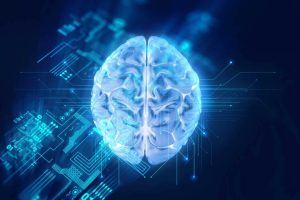Key Takeaways
TMS therapy vs. medication:
- Effectiveness and Safety: TMS therapy offers a safe alternative with fewer side effects compared to traditional medications.
- Non-invasiveness: TMS is a non-invasive option that does not require systemic medication, making it suitable for patients with medication intolerance.
- Long-term Benefits: Research indicates that TMS therapy can provide long-lasting relief from depression symptoms for individuals not responding to medications.
Check out our TMS Services.
In the search for effective treatment options for depression, transcranial magnetic stimulation (TMS) therapy and antidepressant medication have emerged as two popular choices. While medication has long been the go-to treatment for depression, TMS therapy offers a non-invasive alternative that directly targets the brain. Choosing between the two can be challenging, as both approaches have advantages and considerations.
This blog will delve into the basics of TMS therapy vs. antidepressant medications, explore the science behind TMS, compare their side effects and effectiveness, and ultimately discuss which option may be right for you.
Understanding TMS Therapy vs. Antidepressant Medication
When it comes to treating major depressive disorder, individuals have the option of transcranial magnetic stimulation (TMS) therapy or antidepressant medication. TMS therapy is a non-invasive treatment option that stimulates specific areas of the brain using magnetic fields, offering a drug-free alternative for those struggling with depression.
On the other hand, antidepressant medication works by altering the levels of certain chemicals in the brain, such as serotonin and norepinephrine, to alleviate depressive symptoms. Both options have their merits, and it’s important to understand the basics of each to make an informed treatment decision.
Basics of TMS Therapy
TMS therapy utilizes magnetic stimulation to target specific areas of the brain, namely the prefrontal cortex, to reduce depressive symptoms. During a TMS therapy session, magnetic pulses are delivered to the prefrontal cortex, stimulating nerve cells and improving mood regulation. The treatment course typically involves multiple sessions lasting approximately 30 to 40 minutes. It is common for individuals to undergo treatment five days a week for up to 6 weeks.
One of the advantages of TMS therapy is its relatively low systemic side effects. Unlike antidepressant medication, which can cause side effects throughout the body, TMS therapy primarily focuses on the localized area of stimulation in the prefrontal cortex.
The most common side effect of TMS therapy is scalp discomfort during treatment, which is usually mild and temporary. Overall, TMS therapy offers a targeted approach without the systemic side effects often associated with medication.
Basics of Antidepressant Medication
Antidepressant medication, on the other hand, acts on neurotransmitters in the brain to alleviate depressive symptoms. There are several classes of antidepressants, including selective serotonin reuptake inhibitors (SSRIs), tricyclic antidepressants, and norepinephrine reuptake inhibitors. These medications increase the availability of certain neurotransmitters, such as serotonin and norepinephrine, in the brain.
The choice of antidepressant medication depends on various factors, including the individual’s symptoms, medical history, and potential side effects. For example, SSRIs are the most commonly prescribed class of antidepressants due to their efficacy and tolerability.
Tricyclic antidepressants and norepinephrine reuptake inhibitors, on the other hand, may be recommended for individuals who have not responded well to SSRIs or have specific symptoms that might benefit from these medications.
Determining the most suitable antidepressant medication often requires dosage adjustments and close monitoring by a healthcare provider.
The Science Behind TMS
To understand the science behind TMS therapy, we must delve into the concept of transcranial magnetic stimulation. TMS therapy operates on the principle of using magnetic fields to stimulate nerve cells in specific areas of the brain.
In the case of depression treatment, TMS therapy targets the dorsolateral prefrontal cortex, an area responsible for mood regulation, behavior, and cognitive processes. By delivering magnetic pulses to this region, TMS therapy aims to modulate neural activity and improve depressive symptoms.
What Does TMS Therapy Stimulate?
The dorsolateral prefrontal cortex is crucial in mood regulation, decision-making, and emotional processing.
Magnetic stimulation in TMS therapy involves using a coil, which generates magnetic fields. When the coil is placed against the scalp, the magnetic fields pass through the scalp and skull, reaching the prefrontal cortex. These magnetic pulses trigger small electrical currents in the nerve cells, activating interconnected brain regions.
The Role of Antidepressants in Treating Depression
Antidepressant medication has long been a cornerstone in the treatment of depression. By targeting neurotransmitters in the brain, antidepressants aim to alleviate depressive symptoms and improve overall mood. These medications can be effective in reducing symptoms of depression, such as persistent sadness, fatigue, and loss of interest in activities.
However, it is important to note that antidepressants are not a one-size-fits-all solution for depression treatment. Different individuals may respond differently to various antidepressant medications, and finding the right medication and dosage often requires trial and error.
Different Types of Antidepressants
Antidepressant medications come in various classes, with each class targeting different neurotransmitters or receptors in the brain.
Here are some common types of antidepressants:
- Selective serotonin reuptake inhibitors (SSRIs): These medications, such as fluoxetine (Prozac) and sertraline (Zoloft), increase serotonin levels in the brain. They are often the first-line treatment for depression due to their efficacy and tolerability.
- Tricyclic antidepressants (TCAs): TCAs, like amitriptyline and imipramine, affect serotonin, norepinephrine, and other neurotransmitters. They are considered an older class of antidepressants and may have more potential side effects compared to newer options.
- Serotonin-norepinephrine reuptake inhibitors (SNRIs): SNRIs, such as venlafaxine (Effexor) and duloxetine (Cymbalta), work by increasing the levels of both serotonin and norepinephrine in the brain. This dual-action approach can be particularly effective for individuals who do not respond to SSRIs, offering another option with a potentially different side effect profile and efficacy.
Common side effects of antidepressants can include:
- Weight gain
- Sexual dysfunction
- Nausea
- Insomnia
- Headaches
- Dizziness
- Dry mouth.
Comparing Side Effects: TMS Therapy vs. Medications
Comparing the side effects of TMS therapy vs. medication reveals distinct differences. TMS therapy is linked to minimal side effects, primarily scalp discomfort during treatment. The side effects of TMS therapy are generally transient and do not involve the systemic effects commonly associated with medication.
TMS therapy provides a non-pharmacological treatment option without medication-related side effects, while antidepressants, despite their efficacy, can lead to side effects that impact treatment adherence.
Investigating Effectiveness: TMS Therapy vs. Antidepressant Medications
When determining the effectiveness of treatment, considering various factors is crucial. Comparing the success rates of TMS therapy vs. antidepressant medications provides valuable insight. Understanding how individuals respond to each treatment helps tailor personalized depression management plans.
Evaluating the effectiveness of these treatments requires considering their impact on mood disorders and any potential negative side effects experienced by patients.
Success Rates with TMS Therapy
In various studies, transcranial magnetic stimulation (TMS) has shown a remarkable 62% remission rate from major depression and an 83% response rate. These positive outcomes can last at least 12 months following one TMS treatment course. Patients completing the 30 consecutive treatments and six tapering treatments do not experience withdrawal issues as seen with oral antidepressants.
Moreover, about 50% to 60% of individuals with depression who have previously failed medications find a clinically meaningful response with TMS, with one-third experiencing remission.
Success Rates with Antidepressants
While antidepressants are effective for many individuals with depression, success rates can vary based on factors such as the type of medication, dosage, and duration of treatment. Relief from depression symptoms can be experienced within a few weeks, but finding the right medication may require trying multiple options.
Moreover, cost and limited access to therapy lead many patients to rely on antidepressants, with a significant proportion taking medication for over two years or even a minimum of 10 years.
TMS Therapy vs. Medication: Could Combining Both Be Beneficial?
Combining TMS therapy and medication may offer potential benefits for certain individuals. While combining treatments could lead to improved symptom relief and faster recovery, close monitoring is necessary due to the increased risk of side effects.
TMS Therapy Pros and Cons
TMS therapy offers a non-invasive, medication-free approach to treating major depression. Its success rate is comparable to medication with minimal negative side effects like dry mouth and sexual side effects. While it may be costlier initially, the long-term cost-effectiveness is notable. However, insurance coverage for TMS therapy can be challenging, unlike medication, which most insurance companies generally cover.
Antidepressant Medication Pros and Cons
Antidepressant medication effectively reduces symptoms of major depression. However, it may lead to negative side effects like weight gain, sexual dysfunction, and withdrawal symptoms. On the positive side, insurance often covers these medications and is widely available. Despite this, not all individuals respond to pharmacotherapy, and it may take several weeks to see results.
Are You an Ideal Candidate for TMS Therapy?
Are you considering TMS therapy as a treatment option? You may be an ideal candidate if antidepressant medication hasn’t worked for you or if you experience side effects.
Conclusion
Both TMS therapy and medication have their pros and cons when it comes to treating depression. TMS therapy offers a non-invasive and targeted approach to stimulating the brain’s neural pathways, while antidepressant medication works by altering the chemistry of the brain.
For some individuals, TMS therapy may be a more suitable option, especially if they have not responded well to medication in the past or have experienced intolerable side effects.
On the other hand, medication can provide relief for those who prefer a more traditional approach or have found it effective in managing their symptoms.
Ultimately, the choice between TMS therapy vs. medication should be made in consultation with a healthcare professional who can assess your needs and guide you toward the most appropriate treatment.



